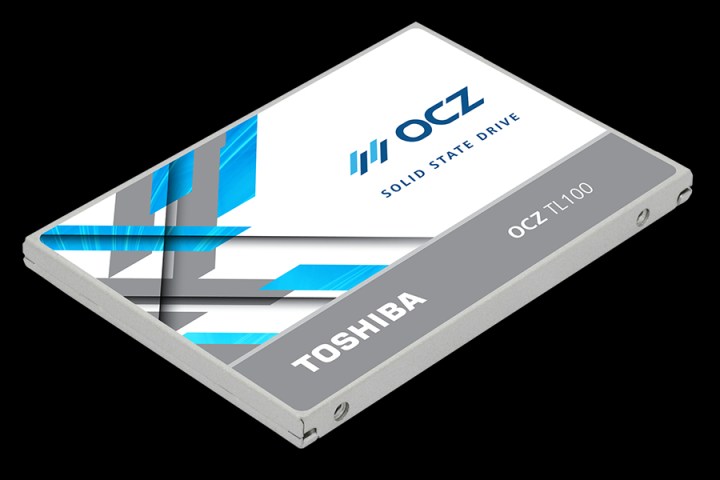
For consumers looking to jump on the SSD bandwagon, the difference after the switch is like night and day. The performance increase of moving away from record player-like hard drives to flash-based storage can be eye-opening, with desktops and laptops booting up into the operating system faster and programs launching nearly instantly. Naturally, the performance increase depends on the actual SSD customers purchase.
The new OCZ TL100 family provides read speeds of up to 550MB per second and write speeds of up to 530MB per second, which is surprisingly speedy for a value-oriented SSD. This speed is due to Toshiba’s triple level cell NAND flash technology, which stores three bits of data per cell. The SSDs also use Toshiba’s in-house NAND flash controller that is responsible for sending data to and from those memory cells.
“The Toshiba OCZ TL100 SATA SSD series demonstrates that “value” doesn’t have to mean end-users need to sacrifice performance or quality,” said Alex Mei, VP of Marketing, Consumer SSDs & Storage Outbound Marketing at Toshiba America Electronic Components, Inc. “As an affordable upgrade option for home and office users, the TL100 series makes SSD performance and responsiveness more accessible to a wider audience.”
The new TL100 family connects to a desktop or laptop through the traditional SATA port supporting transfers of up to six gigabits per second. They measure just 7mm in height and may require an adapter to fit inside a desktop’s drive cage, depending on the build. Many desktop OEMs now provide specific areas to mount SSDs given their growing popularity.
Toshiba’s new drives come packed with free management software. With this tool, customers can fine-tune the drive’s settings, tune the way the operating system interacts with the drive, keep tabs on the drive’s overall health, and update the drive’s firmware. The dashboard consists of a “comprehensive” visual look at all these details in real time.
According to the specs, the drives have a high endurance. Storage devices do not last forever and in the case of hard drives, mechanical components can fail and sectors on the spinning magnetic discs can get lost. SSDs can wear out too, exhausting the memory cells as they continuously write and delete data. This series supports up to 60TB worth of data writes and up to 54GB of data usage per day.
Other features supported by the new OCZ TL100 Series includes SMART technology, which monitors and reports the drive’s health and the trash collection tech called TRIM that cleans out all the debris left behind when removing data from NAND flash cells. The drives are backed by Toshiba’s three-year Advanced Warranty Program.
Here are the specs for Toshiba’s new family of value-oriented SSDs:
| 120GB | 240GB | |
| Sequential Read | Up to 550MB/s | Up to 550MB/s |
| Sequential Write | Up to 530MB/s | Up to 530MB/s |
| Random Read | Up to 85,000 IOPS | Up to 85,000 IOPS |
| Random Write | Up to 80,000 IOPS | Up to 80,000 IOPS |
| Total Bytes Written | 30TB | 60TB |
| Daily Use Guidelines | 27GB per day | 54GB per day |
| Power | Up to 1.6 watts | Up to 1.6 watts |
| Price | $45 | $68 |


